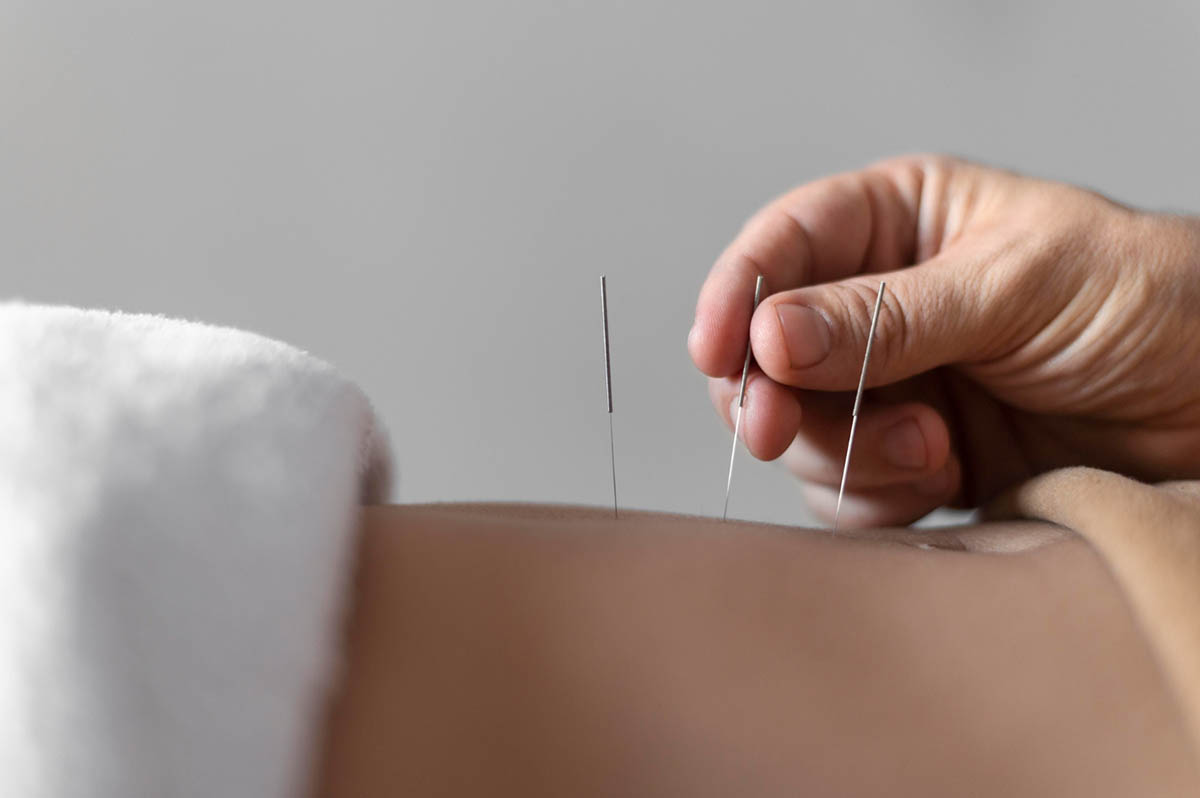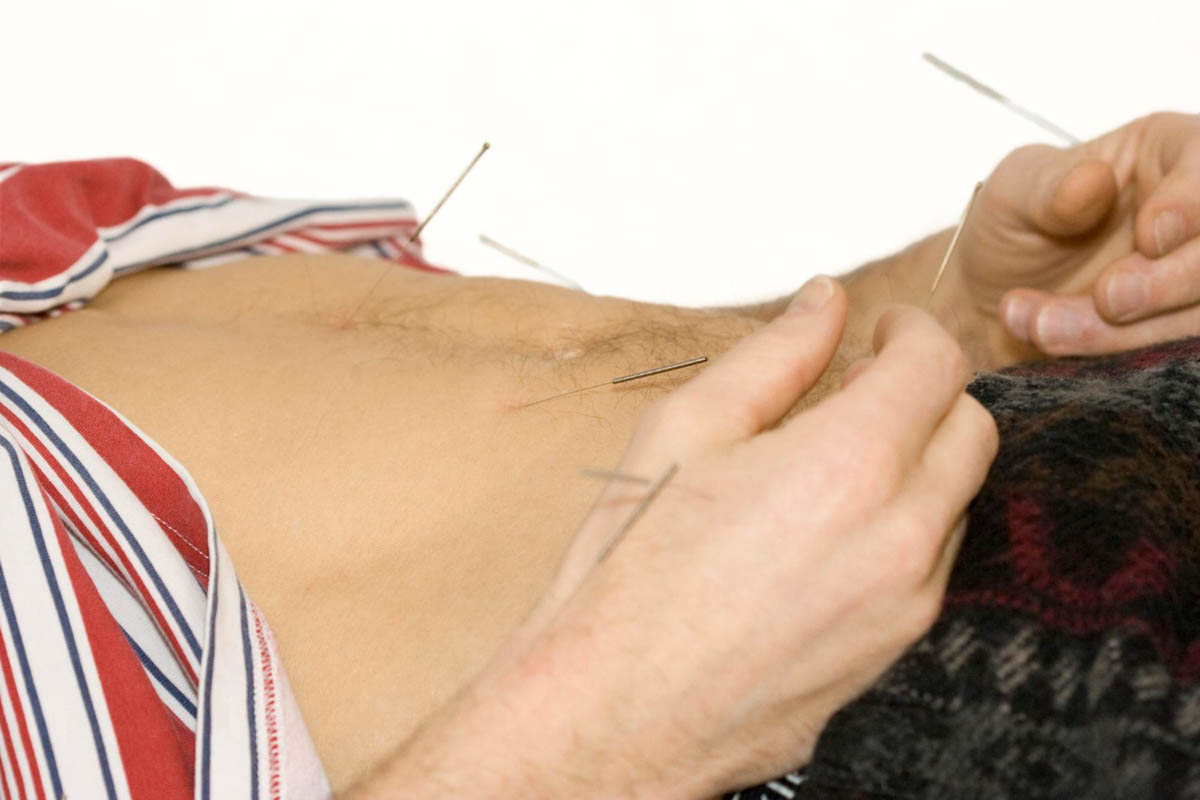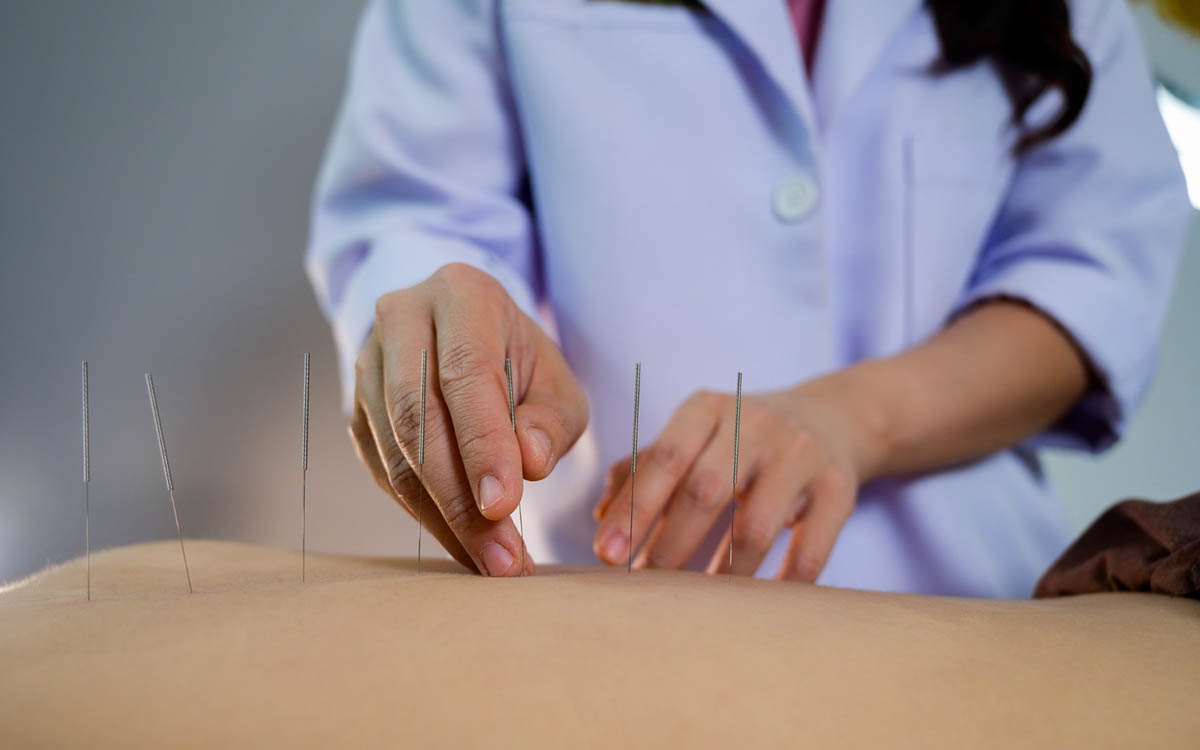
When exploring solutions for muscular pain and movement impairments, dry needling therapy has emerged as an effective treatment option rooted in western medicine principles. Dry needling targets the musculoskeletal conditions that often contribute to chronic pain, such as myofascial pain syndrome. This technique is frequently used as part of a larger treatment plan in physical therapy treatment settings, providing relief from conditions like knee pain, tennis elbow, and plantar fasciitis.
This blog will explore what is dry needling and how does it work, its benefits, and the functional outcomes you can expect.
What is Dry Needling?
Dry needling is a physical therapy treatment that uses solid filament needles—thin, sterile, disposable needles—inserted into myofascial trigger points, taut bands, or tight bands of muscles and connective tissues. These trigger points are often the cause of myofascial pain syndrome and musculoskeletal pain, which can result in movement impairments and muscle contraction difficulties.
One of the key questions people ask is, “what is dry needling and how does it work?” Unlike acupuncture, which is based on balancing the flow of energy or “Qi” in the body, dry needling follows the principles of western medicine. It focuses on treating the skeletal muscle and musculoskeletal conditions directly by altering the chemical environment of the affected muscle, improving blood flow, and promoting healing.
How Does Dry Needling Work?
So, how does dry needling work? During a dry needling session, a trained therapist inserts dry needles into specific areas of the muscle—usually trigger points or tight muscles. The insertion stimulates a local twitch response, which is an involuntary muscle contraction. This response helps break the pain cycle by relieving pressure pain and reducing pain intensity.
The goal is to improve muscular function, alleviate musculoskeletal pain, and encourage muscle activation patterns for better movement. By targeting myofascial pain directly, dry needling can produce improvements in pain and overall functional outcomes. The technique is particularly beneficial for chronic conditions like arthritis pain and knee pain, and for patients experiencing pain severity from muscle tightness or injury.
Dry Needling vs. Acupuncture: What’s the Difference?
While both dry needling vs acupuncture involve the use of needles, their purposes and approaches differ significantly. Acupuncture is a treatment rooted in traditional Chinese medicine, focusing on restoring the flow of energy (Qi) along meridian pathways throughout the body. Acupuncture needles are placed in specific points to balance this energy and treat various ailments, including bodily functions like immune function and hemodynamic response.
The global dry needling market is expected to exceed USD 96 billion by 2036, with a projected annual growth rate of 4% over the next decade. This increase reflects the growing demand for non-invasive treatments like dry needling for musculoskeletal conditions.
On the other hand, dry needling is grounded in western medicine principles and focuses on reducing myofascial pain and musculoskeletal pain through autonomic stimulation. While acupuncture is used to treat a wide range of conditions, dry needling specifically targets skeletal muscle dysfunction, focusing on releasing trigger points and reducing muscle tension. It’s a crucial part of manual therapy for patients undergoing active rehabilitation or physical therapy.
Benefits and Applications of Dry Needling
Dry needling provides a range of therapeutic benefits, making it a valuable tool in physical therapy. It not only reduces pain levels but also improves muscle recovery, flexibility, and overall mobility. Below, we’ll delve into the specific benefits and conditions where dry needling therapy excels.
Pain Relief and Muscle Soreness Reduction

One of the most sought-after benefits of dry needling is its ability to reduce pain in patients suffering from musculoskeletal conditions. By targeting trigger point pain, dry needling disrupts the pain cycle and increases the pressure pain threshold, leading to reductions in pain intensity and improvement in pain perception. This treatment is highly effective for managing chronic pain from conditions like arthritis pain, plantar fasciitis, tennis elbow, and myofascial pain syndrome.
Research indicates that dry needling provides similar levels of effectiveness at the 3-month mark, with significantly greater benefits observed at 6 months. This suggests that when combined with a comprehensive rehabilitation program, dry needling has the potential to outperform other methods that rely on surgery or injections.
In addition, dry needling helps to address muscular pain and soreness that might result from injury or overuse, providing significant relief in physical therapy patients.
Promoting Muscle Recovery and Healing
In addition to pain relief, dry needling enhances the healing process by improving muscle activation patterns and promoting blood flow to the affected muscles. This can accelerate recovery from injuries and aid in active rehabilitation, particularly in sports-related injuries. Athletes often turn to dry needling for faster recovery and improved range of movement, making it an excellent complement to manual therapy.
By targeting connective tissues and skeletal muscle, dry needling helps improve flexibility, support healing, and restore normal muscular function in patients dealing with injuries or movement impairments.
Treating Myofascial Trigger Points
Myofascial trigger points are sensitive areas within the muscles that develop due to stress, overuse, or injury. These areas, often referred to as taut bands, can cause trigger point pain and limit movement. Dry needles are used to stimulate these trigger points, creating a local twitch response that helps release tension and restore muscle balance.
Common areas treated include the neck, shoulders, lower back, and hips, where myofascial pain tends to manifest. Dry needling for myofascial pain syndrome is particularly effective, offering relief from musculoskeletal conditions that might otherwise be resistant to traditional treatments.
Dry Needling for Chronic Muscle Tightness
Chronic muscle tightness can result in significant pain severity and limited mobility. Dry needling therapy is an excellent option for releasing tightness in larger muscles and deep muscle layers. The therapy promotes better circulation, reduces muscle tension, and improves the overall flexibility of the affected area.
In cases of chronic conditions like knee pain or arthritis pain, dry needling can be integrated into a larger treatment plan alongside alternative treatments and physical therapy exercises. It addresses both acute injuries and long-term issues like chronic pain, making it a versatile tool in managing musculoskeletal conditions.
The Dry Needling Procedure
What to Expect Before the Treatment
Before starting dry needling therapy, your physical therapist will conduct a thorough assessment of your condition. This involves an evaluation of muscle contraction, movement limitations, and pain patterns to determine the best treatment approach. Your plan of care may include dry needling as a part of a comprehensive physical therapy treatment regimen, tailored to your specific needs.
What Happens During a Dry Needling Session?
During the session, disposable needles are inserted into the targeted trigger points. The solid filament needles used in dry needling are much thinner than the acupuncture needle and are designed to penetrate deep into skeletal muscle and connective tissues.
As the needles stimulate the muscle, you may experience a twitch response or slight discomfort, which indicates that the therapy is working. The length of a session can vary, but many people wonder, “how long does dry needling take to work?” Results may vary depending on the severity of your condition, but many patients report feeling relief within a few sessions, while some see improvements after just one treatment.
Post-Treatment: Aftercare and Recovery
After the treatment, it’s common to experience mild soreness in the treated areas, similar to post-workout muscle pain. This soreness usually resolves within a day or two. Your therapist will provide guidance on best practices for recovery, such as using heat or cold packs, staying hydrated, and performing gentle stretches.
Dry needling also helps improve functional outcomes by increasing range of movement, reducing pain intensity, and promoting faster recovery.
Safety, Risks, and Considerations
Who Should and Shouldn’t Get Dry Needling?
While dry needling therapy is considered safe for most individuals, it may not be recommended for those with specific medical conditions such as infections, bleeding disorders, or those who are pregnant. Always consult with a certified professional to ensure that dry needling is the right medical treatment for your needs.
Potential Side Effects of Dry Needling

Common side effects of dry needling include mild soreness, bruising, or temporary swelling at the needle insertion sites. In follow-up studies conducted over a 6- to 12-month period, dry needling showed a trend toward reducing pain, although the results were not statistically significant. Despite this, the treatment continues to be favored for its role in pain management. That’s why it’s crucial to receive treatment from a licensed therapist who uses disposable needles and follows strict hygiene protocols.
Conclusion
Dry needling is an effective physical therapy treatment that helps manage musculoskeletal pain, promote muscle recovery, and restore muscular function. Whether you’re dealing with chronic conditions like knee pain or recovering from an injury, this therapy offers numerous benefits. Always consult with a trained therapist to create a plan of care that includes dry needling as part of your larger treatment plan.
At WildHawk Physical Therapy, we specialize in cutting-edge treatments like dry needling to effectively address chronic neck pain and back pain. Our expert therapists use dry needling as part of a comprehensive rehabilitation program to relieve muscle tightness, improve range of motion, and reduce pain levels. Whether you’re dealing with acute discomfort or long-term issues, our personalized approach ensures lasting relief and a smoother recovery. Experience the difference at WildHawk Physical Therapy today.
FAQs
Does Dry Needling Hurt?
Most patients report only mild discomfort during the procedure, though sensations can vary. The twitch response felt during treatment is a sign that the targeted taut band or tight band is being released.
How Many Dry Needling Sessions Are Needed for Results?
The number of sessions will depend on your condition, but many patients experience relief after just one session. However, a series of treatments may be necessary for lasting results.
How Quickly Will I See the Benefits of Dry Needling?
Results can vary, but many people notice a reduction in pain and improved range of movement within the first few sessions. The length of time for results can also depend on factors like the severity of the condition and how your body responds to the treatment.









